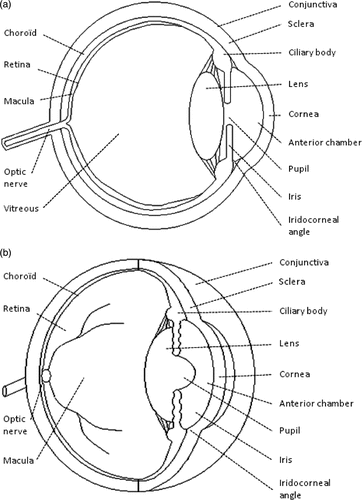Figures & data
Figure 2. Geometry of the six transducers: 4.5-mm width and 7-mm length segment of a 10.2 mm radius cylinder. The dotted lines represent the focal volume, similar to an elliptic cylinder.

Figure 3. Positioning of the device including circular piezoelectric transducers, inserted into a spacing cone in contact with the eye (A). Sequential activation of the transducers, producing an ultrasonic beam which selectively destroys a well-defined portion of the ciliary body (B). CC: coupling cone. CB: ciliary body. UB: ultrasound beam.

Figure 4. Histological sections at low (top) and high (low) magnification showing the difference between the intact (A and C) and treated (B and D) ciliary body: loss of the bilayered epithelium responsible for the production of aqueous humor (fluid filling the eye).

Table 1. Summary of the experimental studies evaluating the potential of ultrasound for ocular drug, protein or gene delivery.
